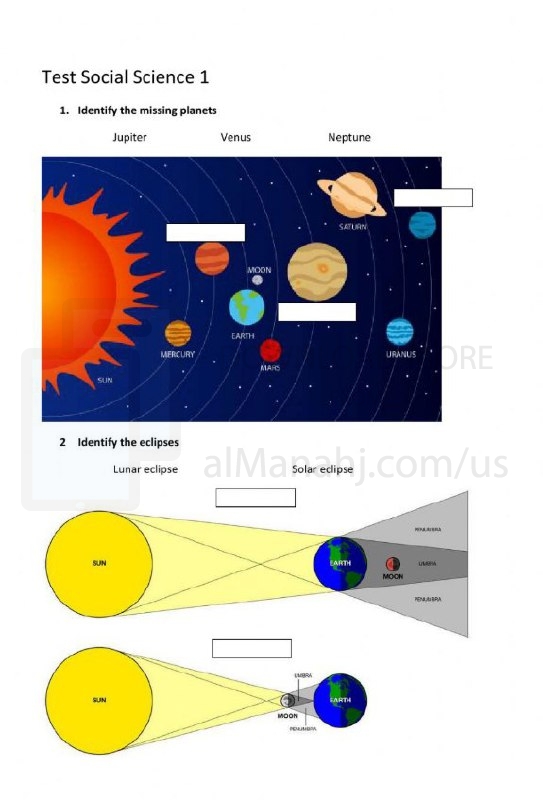| You are here: Almanahj Website ⇒ American curriculum ⇒ 4th Grade ⇒ Geology ⇒ Term 1 | ||
|---|---|---|
Worksheet about The Earth Science | ||
|---|---|---|
| Subject: Geology | ||
| 4th Grade | ||
| Term 1 | ||
| Year: 2023/2024 | ||
| Size: 221.7KB | ||
| Number of clicks: 76 | ||
| Publish date:November 22, 2023 | ||
| Added by: Eman | ||
| Last download date: 2024-09-11 02:01:14 | ||
| Updated by: Eman9966 on 2023-11-23 15:48:33 | By: theodor laurasjb | |
| File info: Earth science, also known as geoscience, is the branch of science that deals with the physical, chemical, and biological aspects of the Earth. It encompasses a wide range of disciplines, including geology, geophysics, geochemistry, hydrology, meteorology, oceanography, and paleontology. Major Branches of Earth Science Geology: Geology is the study of the Earth's solid features, including its rocks, minerals, and landforms. It explores the Earth's history, structure, and composition, and helps us understand natural phenomena like earthquakes, volcanoes, and mountain formation. Geophysics: Geophysics investigates the Earth's physical properties, such as its gravitational and magnetic fields, internal structure, and seismic waves. It employs tools like seismometers, gravimeters, and magnetometers to study the Earth's interior and dynamics. Geochemistry: Geochemistry examines the chemical composition of the Earth, including its rocks, minerals, water, and atmosphere. It delves into the chemical processes that shape the Earth's environment and influence the distribution of elements. Hydrology: Hydrology focuses on the distribution, movement, and properties of water on Earth. It studies water resources, water quality, groundwater systems, and the effects of human activities on water resources. Meteorology: Meteorology is the study of the Earth's atmosphere, including its weather patterns, climate, and atmospheric phenomena like clouds, precipitation, and storms. It helps us understand weather forecasting, climate change, and atmospheric circulation. Oceanography: Oceanography delves into the physical, chemical, and biological aspects of the world's oceans. It explores ocean currents, marine ecosystems, ocean chemistry, and the impact of human activities on the marine environment. Paleontology: Paleontology is the study of prehistoric life, including fossils, extinct organisms, and the evolution of life on Earth. It provides insights into the Earth's past climate, biodiversity, and the history of life. Earth Science's Impact on Society Earth science plays a crucial role in understanding and addressing various environmental challenges and societal needs. It contributes to: Natural Hazard Mitigation: Earth science helps us predict and mitigate natural disasters like earthquakes, volcanic eruptions, floods, and landslides. It guides disaster preparedness, building codes, and land-use planning. Resource Management: Earth science informs the exploration, extraction, and sustainable use of natural resources like minerals, energy sources, and water resources. It ensures responsible resource management and environmental protection. Climate Change Adaptation: Earth science provides insights into climate change impacts, sea level rise, and extreme weather events. It helps communities prepare and adapt to the changing climate. Environmental Protection: Earth science guides environmental monitoring, pollution control, and conservation efforts. It supports the protection of ecosystems, biodiversity, and air and water quality. Urban Planning: Earth science informs urban planning decisions, considering factors like soil properties, groundwater resources, floodplains, and seismic hazards to ensure sustainable and resilient urban development. | ||
| Downloading link Worksheet about The Earth Science |
|---|
|
1700635485.pdf
The file is being prepared for download
|
| File images |
|---|
 |